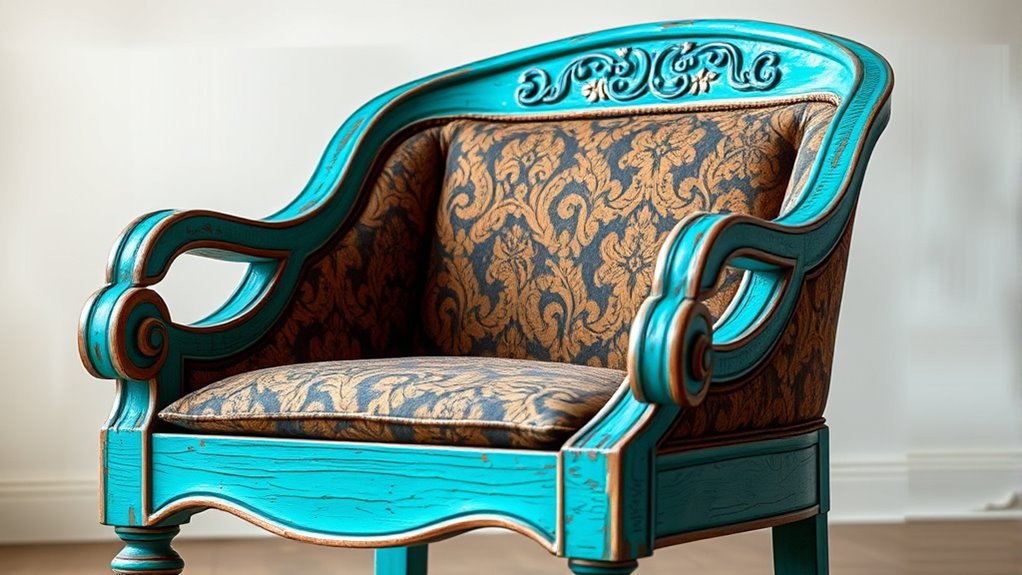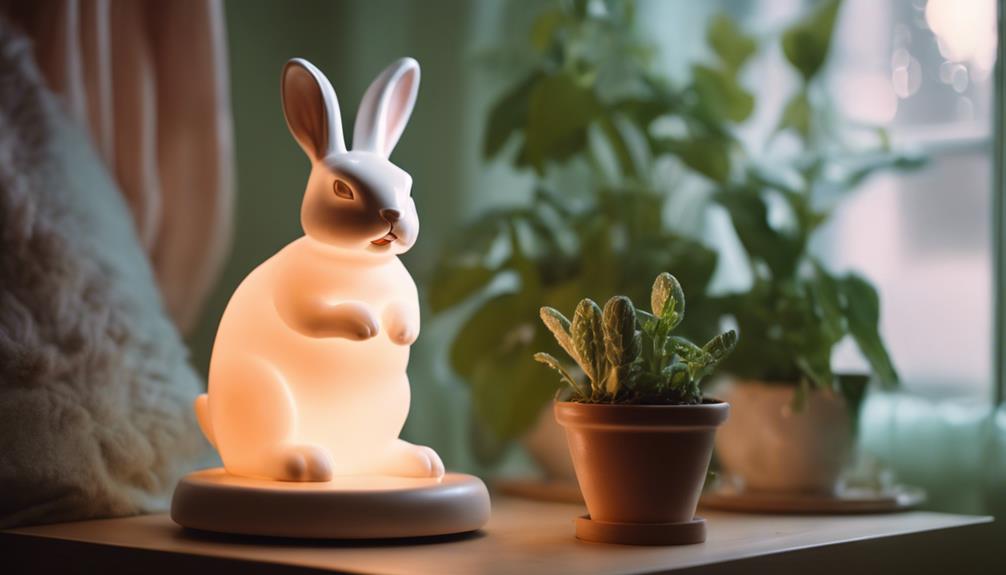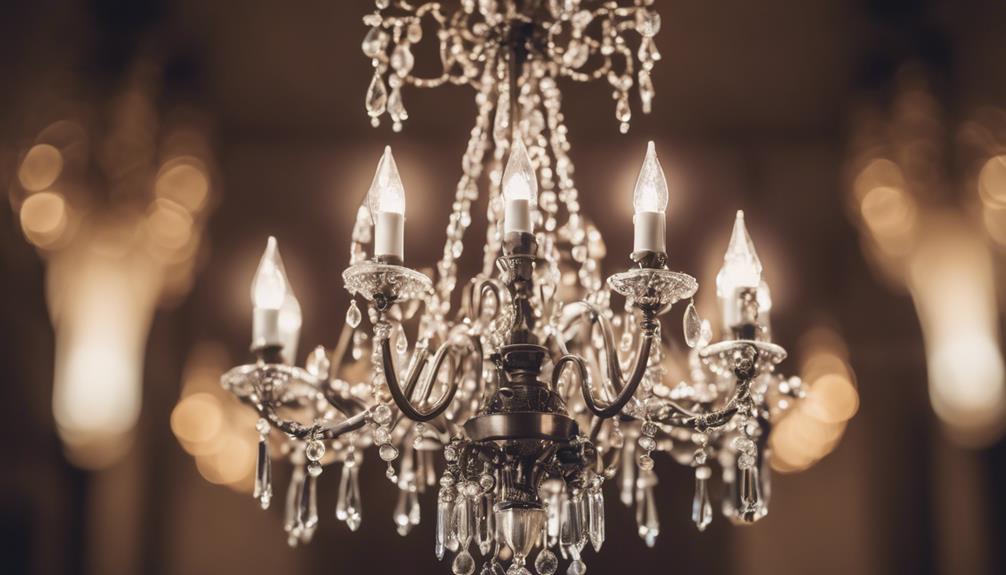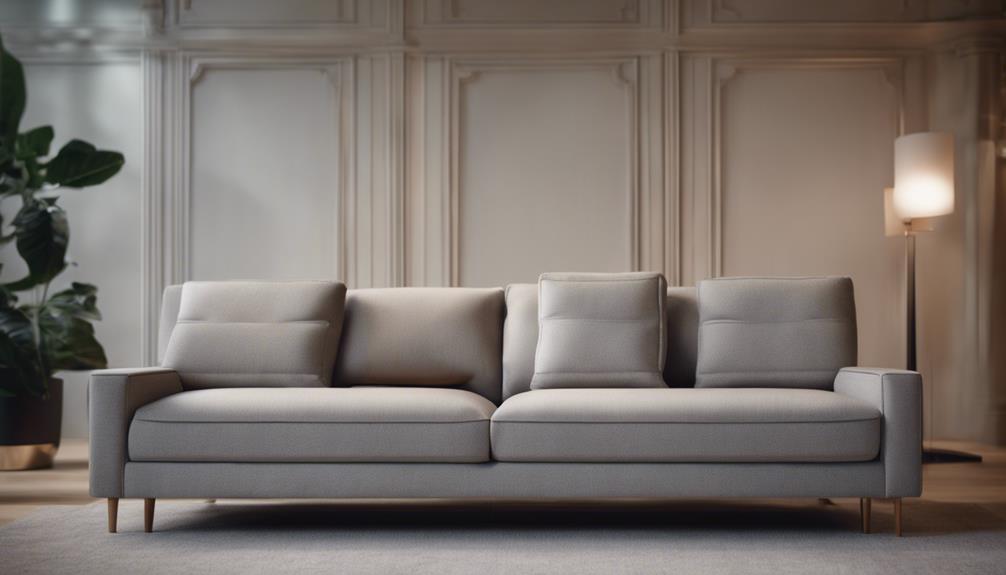Transforming thrift store furniture into statement pieces is a fun and budget-friendly project. Start by recognizing the potential in worn or outdated pieces and consider how to match them with your personal style. Choose bold or soft colors and update hardware for a fresh look. Prepare surfaces properly and add decorative touches like stenciling or distressing. Using sustainable techniques and protective finishes extends your piece’s life—keep exploring to learn more about transforming your furniture creatively.
Key Takeaways
- Assess the thrifted furniture’s condition and envision potential transformations to match your style.
- Choose suitable colors and finishes—bold or subtle—to enhance the piece’s character and fit your decor.
- Update hardware with modern or vintage handles for a fresh look, ensuring proper fit with accurate measurements.
- Prepare surfaces by sanding and cleaning, then add decorative techniques like distressing or stenciling for unique details.
- Apply protective finishes to extend durability, personalize the piece, and create a distinctive statement in your space.
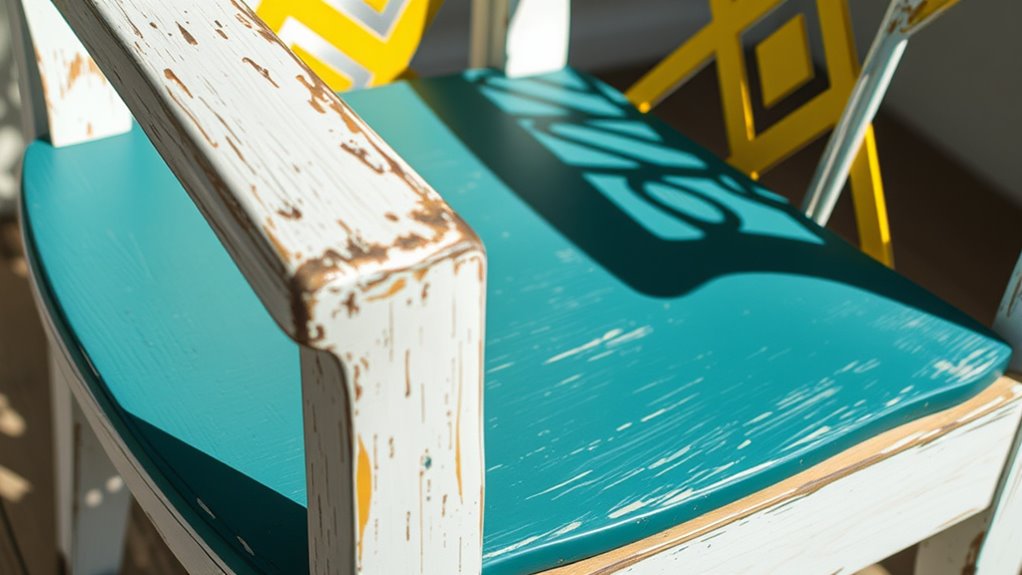
Ever wondered how you can transform old, unused furniture into stunning, one-of-a-kind pieces? Upcycling gives you the perfect opportunity to breathe new life into thrift store finds or inherited pieces that no longer match your style. The key is to see potential where others see only worn surfaces. Start by considering your desired color schemes—whether you want a bold, vibrant look or something more subdued and neutral. Choosing the right paint or stain can completely change the vibe of a piece. Bright colors like turquoise or coral can make a statement, while softer hues like pastel blues or greys create a calm, sophisticated feel. Remember, the goal is to match the piece with your personal style and the space it’ll occupy.
Once you’ve settled on a color scheme, focus on updating the hardware. Old handles, knobs, and pulls can make even the most beautiful furniture look tired and outdated. Swapping them out is a quick and inexpensive way to modernize the piece. For a vintage vibe, look for brass or antique-style hardware. If you want a sleek, contemporary look, opt for matte black or brushed nickel finishes. Sometimes, even a simple spray of metallic paint on existing hardware can add a touch of elegance. When updating hardware, make sure to measure the existing holes carefully so your new pieces fit perfectly, avoiding unnecessary drilling or adjustments.
Before painting or staining, prep the surface thoroughly. Sand down any rough spots or peeling paint, and clean the surface to remove dust and grease. Proper prep ensures your new finish adheres well and lasts longer. You might also consider distressing certain areas for a shabby chic look, or adding decorative techniques like stenciling or glazing for extra detail. These small touches elevate your project from basic to truly personalized. Additionally, incorporating waterproofing or protective finishes can help your upcycled furniture withstand everyday wear and tear, especially if it’s placed in high-traffic areas or outdoor spaces.
Upcycling isn’t just about aesthetics; it’s also about sustainability. By repurposing furniture, you reduce waste and avoid contributing to the demand for new resources. Plus, it’s incredibly satisfying to see a piece go from drab to fab with your own hands. Whether you’re aiming for a rustic farmhouse vibe or a sleek modern aesthetic, upcycling allows you to create a piece that reflects your personality and style. With a little patience, some creativity, and attention to detail—especially with color schemes and hardware updates—you’ll turn ordinary furniture into a statement piece that’s uniquely yours.
Frequently Asked Questions
What Tools Are Essential for Furniture Upcycling?
When you upcycle furniture, essential tools include a good sander for sanding techniques and prep work, helping you smooth surfaces. You’ll also need brushes or rollers for applying paint or stain, along with screwdrivers and a drill for disassembly or assembly. A putty knife aids in wood prep, filling gaps or cracks. With these tools, you can transform any piece into a stunning statement piece effortlessly.
How Do I Choose the Right Paint for Upcycling?
When choosing the right paint, consider your project’s needs and style. Explore different paint types like chalk, latex, or spray paint, each offering unique finishes and durability. Think about your color selection—go for shades that complement your space or make a statement. Test small areas first to see how the paint adheres and looks. With the right paint type and color, your furniture will become a stunning focal point.
What Safety Precautions Should I Take During Upcycling?
You should prioritize workspace safety and wear protective gear like gloves, masks, and goggles to shield yourself from dust, fumes, and chemicals. Keep your workspace well-ventilated to prevent inhaling harmful particles. Always read and follow product instructions carefully, and store supplies safely out of reach. By taking these precautions, you safeguard yourself and ensure a safe, enjoyable upcycling experience.
How Can I Ensure Durability of the Upcycled Piece?
They say, “A stitch in time saves nine,” and the same applies here. To guarantee durability, focus on proper wood treatment to protect your piece from moisture and wear. Carefully select sturdy hardware that can handle daily use. Sealing and finishing your project adds an extra layer of protection. With these steps, your upcycled furniture will stand the test of time and look beautiful for years to come.
What Are Eco-Friendly Alternatives to Traditional Upcycling Materials?
You can choose eco-friendly alternatives by using recycled materials like reclaimed wood, glass, or metal, which reduce waste and environmental impact. Opt for natural finishes such as beeswax, plant-based oils, or water-based paints to avoid harmful chemicals. These choices not only make your project more sustainable but also add unique, authentic character to your upcycled furniture, ensuring it’s eco-friendly and beautiful.
Conclusion
Now that you’ve transformed that thrift store find into a stunning statement piece, your furniture has truly become a work of art. It’s like giving new life to something once forgotten, turning it into a shining star in your home. With just a little creativity and effort, you’ve painted a story of sustainability and style. So keep up the upcycling magic—your space is now a gallery of your unique, eco-friendly flair.
